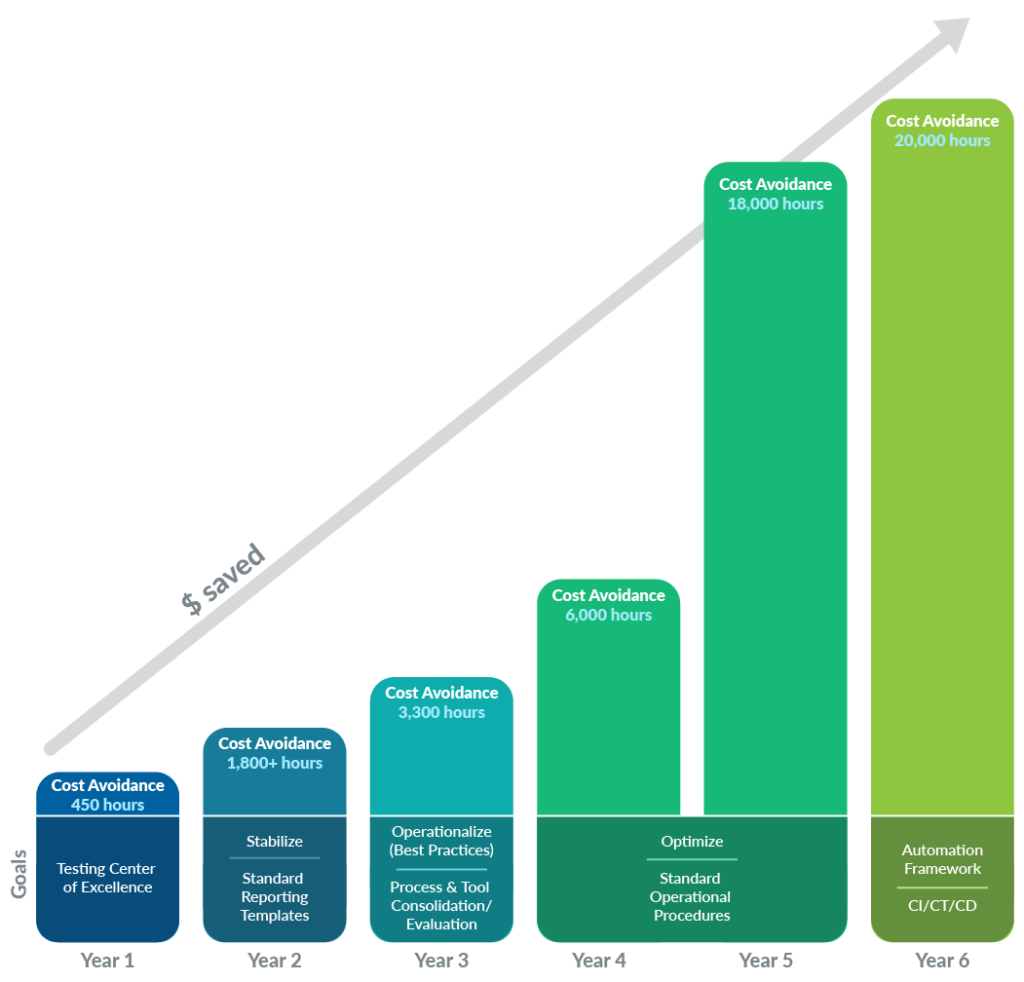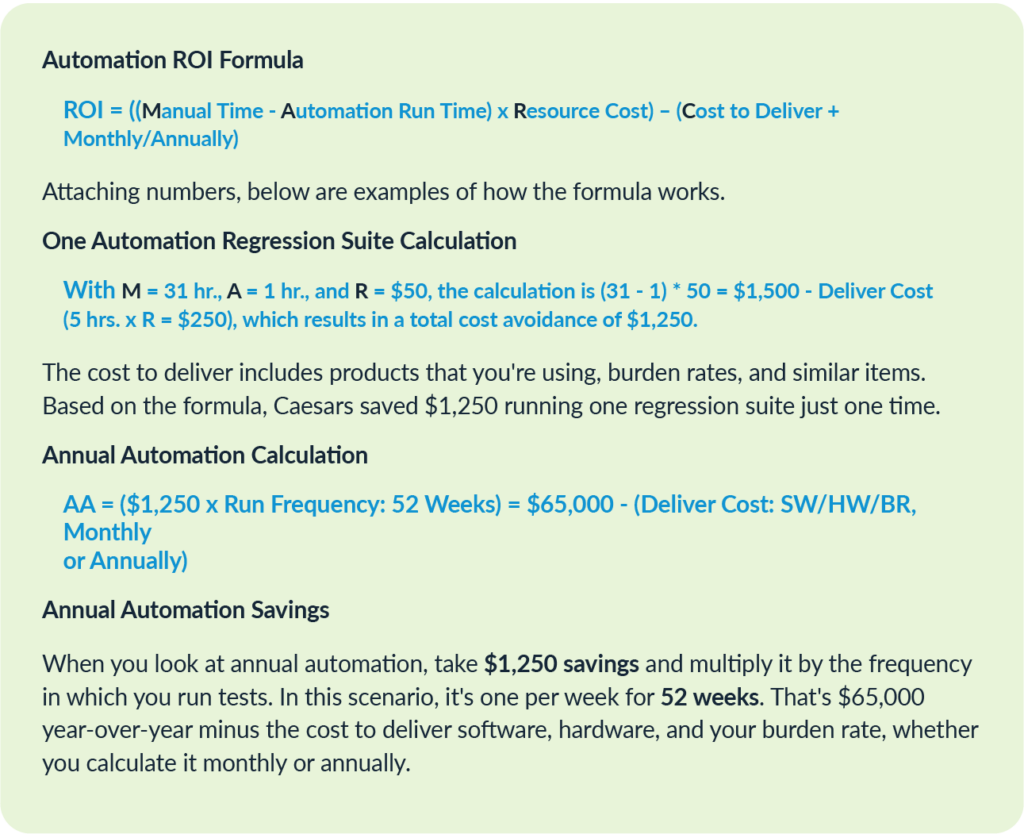See what API testing solution came out on top in the GigaOm Radar Report. Get your free analyst report >>


See what API testing solution came out on top in the GigaOm Radar Report. Get your free analyst report >>
Reading Time: 6 minutes
Jump to Section
Caesars Entertainment is a global leader in gaming and hospitality. After merging with Eldorado Resorts, the company is the largest casino operator in the United States and includes 24 brands.
Caesars’ top priority is its guests. They focus on building loyalty and value through a unique combination of great service, superb products, operational excellence, and technology leadership.
In an endeavor to modernize and expand their customer-focused loyalty program, Caesars chose to integrate Salesforce as the foundation for the systems. To ensure successful implementation, they couldn’t afford to gamble with quality.
With test automation a critical factor in delivering a high-quality customer experience, Roosevelt Washington, senior IT manager of quality assurance at Caesars Entertainment, took the lead to successfully adopt test automation practices and deliver measurable value to the business.
Jump to Section
Watch a preview of the Caesars Entertainment presentation at the recent Automated Software Testing & Quality Summit. Learn how they validate their loyalty program with test automation practices.
FULL PRESENTATION AVAILABLE HERE >>>
As Caesars has grown through acquisitions over the years, so has the number of developed applications. The result is multiple disconnected systems across multiple companies.
It’s extremely important to Caesars to create a seamless experience for their guests. That means that no matter which of the acquired 22 new properties guests choose to visit, they have a consistent experience. For example, they can take their reward card to any slot machine on any property and it will work the same way. It’s a smooth, flawless interaction.
There’s a great deal of integration work and testing required within a complex system to ensure guests have a common and consistent experience. Manual testing efforts just weren’t able to keep pace with delivery.
Roosevelt and his team determined that test automation was the key to efficiently deliver a high-quality experience to each visitor. They started their quality management journey in 2014 and have implemented continuous improvements ever since.
Roosevelt views return on investment (ROI) from a cost avoidance perspective rather than cost savings. In addition to delivering seamless experiences to their guests, their cost avoidance has grown at a staggering rate through the years.

With the decision to create a testing center of excellence came the start of a development roadmap. Committed to improving quality and testing standards and practices, the QA team took an incremental approach beginning with the staff. The first steps on Caesars’ journey were to define and implement test automation and quality management best practices.
Cost Avoidance: 450 hours
In 2015, Caesars took the next steps to improve their quality assurance (QA) processes:
Cost Avoidance: 1,800+ hours
The following year, the QA team evaluated and consolidated all of their existing testing tools, opting for the best of market from their point of view. They worked to standardize processes and tools across the entire enterprise.
Cost Avoidance: 3,300 hours
During 2017 and 2018, the QA team worked to optimize their test frameworks and standardized operating procedures.
Cost Avoidance:
For 2019, Roosevelt and his team moved to continuous integration/continuous deployment (CI/CD) pipelines. They created an automation framework, which is two-fold:
The frontend is like self help. Super users—even those without coding knowledge—can select use cases from an interface to run automatically. The backend is where environment simulation is set up for continuous integration, continuous testing, and continuous delivery.
Cost Avoidance: 20,000+ hours
2020 brought COVID-19, which disrupted the hospitality industry and many of Caesars’ initiatives, including engaging in service virtualization. That plan will be carried over to 2021 and beyond when they will incorporate web UI testing using Parasoft Selenic and deploy Parasoft Virtualize to improve their API test strategy.
When implementing software testing automation, there are essential factors to consider.
Caesars’ quality assurance team shared a couple of experiences that put some of the key considerations into perspective.
The team had a product they wanted to get into service virtualization. After developing the use case and providing it to Broadcom, the incumbent vendor, the virtualization failed. Broadcom wanted to charge Caesars to tell them why their product was failing. Roosevelt looked for other vendors and discovered Parasoft. After running the same use case, the same problem occurred.
“The difference? Within 30 minutes, Parasoft’s development team had a hot fix and we were on our way,” explained Roosevelt. “We had a successful proof of concept for service virtualization. You need a strong product and a vendor with strong support.”
Caesars saves time with performance testing by using the same scripts with minimal changes for load testing. Roosevelt says, “You don’t need to have yet another product to do that, and that’s what I love about using Parasoft SOAtest for API testing.”
Caesars is walking the path of continuous improvement, always examining what they’re doing and how to make it better. To communicate the ROI to key stakeholders within Caesars, Roosevelt came up with an automation ROI formula that shows year-over-year cost avoidance using test automation practices.

The calculations based on the automation ROI formula are what Roosevelt presents to leadership at Caesars. It demonstrates a measurable reason to automate testing: the savings in costs you avoid (cost avoidance) outweighs the cost to purchase products in the hardware and software testing tools.
Use our handy ROI calculator to assess potential savings in your testing processes.
Caesars’ testing and ROI automation endeavor started in 2014 with 450 hours of cost avoidance. Each year their annual cost avoidance hours increase exponentially. In 2019, Caesars’ cost avoidance based on automated regression testing was 20,000+ hours. When you multiply those 20,000 hours of automated testing by $50 per hour for the cost of a resource to do it manually, the cost avoidance is well over a million dollars.
By building a scalable and maintainable test automation strategy with the Parasoft Salesforce testing solution, Caesars accelerated testing and delivery. Here are two of the main factors contributing to this acceleration and cost avoidance:
Find out how to choose the right API testing solution for your organization.